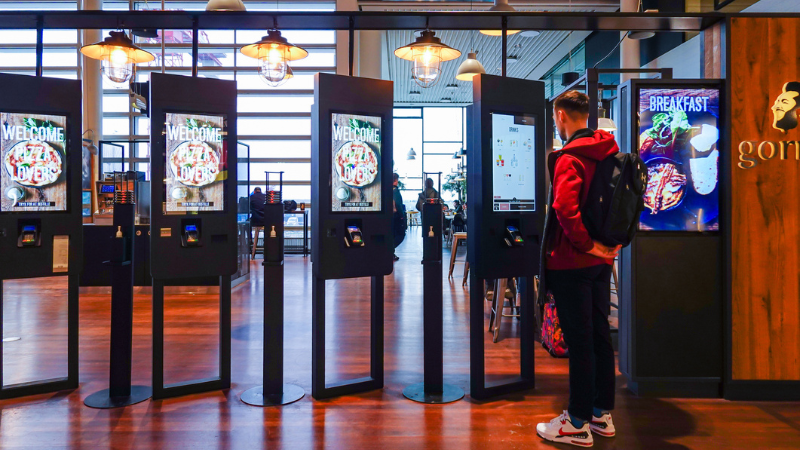
CHICAGO, May 5, 2025 — If social media felt like a ground-shaking advance in food-away-from-home marketing, get ready for another seismic shift. Retailers are already hailing a fast-spreading new way of delivering promotional messages directly to customers, and this one comes with its own revenue stream.
Virtually unheard-of five years ago, the communications channels known as retail media networks are emerging as a major new source of income for grocery stores, online retailers like Amazon, and even some home-goods retailers. They have yet to make significant inroads into foodservice, but experts agree that adoption is accelerating.
The delivery platform is essentially a closed-circuit advertising network. The retailer sells advertising (usually via a third party) for products that are sold by the operation. The call-to-purchase message is delivered to customers via instore kiosks, on-premises merchandisers, online ordering sites, smartphone loyalty apps, the display windows of “smart” shopping carts, or any other digital screen controlled by the retailer.
The advertisers are typically food brands sold by the retailer or services offered by a neighboring business, like a movie theater or car wash.
The hook for those marketers is reaching customers of the host business as they’re shopping. Data provided by the retailer also enhances the chances of reaching a patron whose profile indicates they’re primed to buy. An ad for mustard, to pick a hypothetical example, can run on the shopping-cart screen of a loyalty-program member who’s known to be a regular purchaser of the condiment.
The Food Marketing Institute (FMI) projects that domestic retail media networks, or RMNs, will collect $26.6 billion in advertising for consumer packaged goods by 2026, with $6.7 billion going specifically to brick-and-mortar and online grocery sellers.
The global consultancy Oliver Wyman puts total global revenues at $90 billion currently.
“Retail media is not merely an emerging opportunity; it is becoming in some respects essential to the future of consumer marketing and influencing the path to purchase,” Mark Baum, FMI’s Chief Opportunity Officer, said in a blog entry posted last week on the association’s website.
Multi-billion-dollar grocery sellers have been the pioneers of RMNs in the U.S., with robust networks run today by Amazon, Target, Kroger, Walmart and Costco. From a tally of virtually zero networks five years, ago, more than 200 are now in operation, according to Oliver Wyman.
Now the networks are spreading rapidly to all sorts of food-away-from-home sellers.
A number of major convenience-store chains have already taken the plunge. RMNs are now generating revenues for 7-Eleven, WaWa and Casey’s, among others.
Restaurants have largely been on the sidelines, with only a few major brands giving RMNs a try.
The Chuck E. Cheese fun and games chain announced May 1 that it was launching one across the 3,000 screens of its more than 500 arcade-style restaurants. The brand said it the network will be one of the biggest in the U.S.
Last November, Chick-fil-A started producing its own entertainment for a new app called Chick-fil-A Play. There was speculation at the time that the programming would be used to make an expected RMN “stickier,” though Chick-fil-A has not confirmed those reports.
McDonald’s and Starbucks have reportedly entered into RMN arrangements with a third party called LiveRamp.
Meanwhile, the foodservice e-commerce company Cut+Dry has teamed up with the grocery delivery concern InstaCart to form an RMN aimed at restaurateurs rather than restaurant customers.
According to a January announcement, Cut+Dry will use InstaCart’s technology to deliver ads to the screens of the devices operators use to order products from their distributors. The set-up enables the distributors to showcase products their restaurant client may be primed to buy, including the distributor’s proprietary brands.
“Food manufacturers have long struggled to connect with end buyers and influence purchasing decisions at the point of sale,” Mani Kulasooriya, co-founder and CEO of Cut+Dry, said in the announcement. “By integrating Instacart’s market-leading advertising capabilities with Cut+Dry’s scale and influence in foodservice distribution and digital commerce, we’re creating one of the largest digital advertising opportunities in the industry.”
As Managing Editor for IFMA The Food Away from Home Association, Romeo is responsible for generating the group's news and feature content. He brings more than 40 years of experience in covering restaurants to the position.